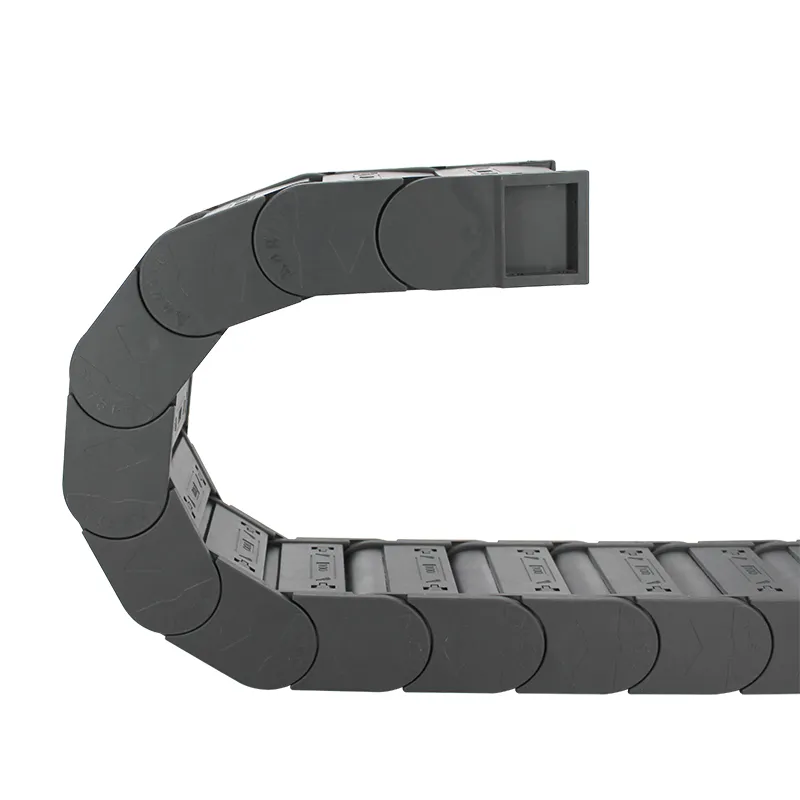Understanding the Benefits and Applications of Open Cable Chains in Modern Industry
Understanding Open Cable Chains
In the world of modern machinery and engineering, the significance of cable management systems cannot be overstated. Among these systems, open cable chains have emerged as a fundamental solution for organizing cables in dynamic environments. This article explores the concept of open cable chains, their applications, advantages, and considerations for use in various industries.
What Are Open Cable Chains?
Open cable chains, also known as energy chains or cable carriers, are specialized structures designed to house and guide flexible cables and hoses as they move. Unlike closed cable chains that completely encase the cables, open cable chains feature a segmented design that allows easy access to the cables within. This open structure not only facilitates quick installation but also simplifies maintenance and troubleshooting processes.
These chains are composed of interconnected links that can flex as machinery or equipment moves. They are typically made from durable materials such as plastic or metal, which can withstand various environmental factors, including oil, chemicals, and temperature variations. The design of open cable chains ensures that cables are protected from wear and tear, making them a reliable solution for cable management.
Applications of Open Cable Chains
Open cable chains are versatile and find applications across numerous industries. In manufacturing, they are often used in CNC machines, robotic arms, and conveyor systems where cables need to be organized while allowing for significant movement.
In the automotive industry, open cable chains play a critical role in assembly lines, helping to streamline the manufacturing process by ensuring that power and data cables remain orderly as machines operate. Similarly, in entertainment, these chains are utilized in stage rigging systems where various electrical cables are suspended and need to move freely without tangling.
Additionally, open cable chains are also employed in automation systems and industrial robots where precise and repetitive movements occur. By properly managing cables, these systems can function more efficiently and with minimal downtime, significantly improving productivity.
Advantages of Open Cable Chains
open cable chain

One primary benefit of using open cable chains is their ability to provide a clean and organized way to manage cables. A well-ordered cable system reduces the risk of damage to the cables, which can lead to costly downtimes and repairs. Open cable chains also enable faster installation and replacement of cables, allowing technicians to access cables without disassembling large sections of equipment.
Moreover, their open design promotes better airflow, preventing overheating of cables and ensuring optimal performance. This is particularly important in applications where flexibility and motion are crucial, as it minimizes friction and wear between cables.
Another advantage is the vast range of customization available with open cable chains. Manufacturers often offer various sizes, shapes, and materials, allowing businesses to select the best configurations for their specific needs. This adaptability is particularly valuable in industries with stringent space and weight requirements.
Considerations When Using Open Cable Chains
While open cable chains offer numerous benefits, there are some considerations to keep in mind. The environmental factors in which the chains are used can affect their performance. For instance, extreme temperatures or exposure to corrosive substances may require specialized materials to ensure longevity.
Additionally, it’s essential to calculate the weight and bending radius of cables housed within the chain to prevent strain on the cables and ensure smooth movement. Neglecting these factors can lead to premature failure of both cables and chains, negating the advantages of using open cable chains in the first place.
Lastly, regular maintenance checks should be performed to ensure that the open cable chains are functioning correctly. Contamination from dust, debris, or fluid can affect their operation, so routine cleanings may be necessary to maintain optimal performance.
Conclusion
Open cable chains have revolutionized cable management in various industries by providing a robust, organized, and accessible solution. Their unique design promotes efficiency and reliability in systems that require constant movement. As technology continues to advance, the role of open cable chains will likely expand, driving innovation and enhancing the effectiveness of equipment across diverse applications. Understanding their benefits and considerations can help businesses make informed decisions when implementing cable management solutions.








